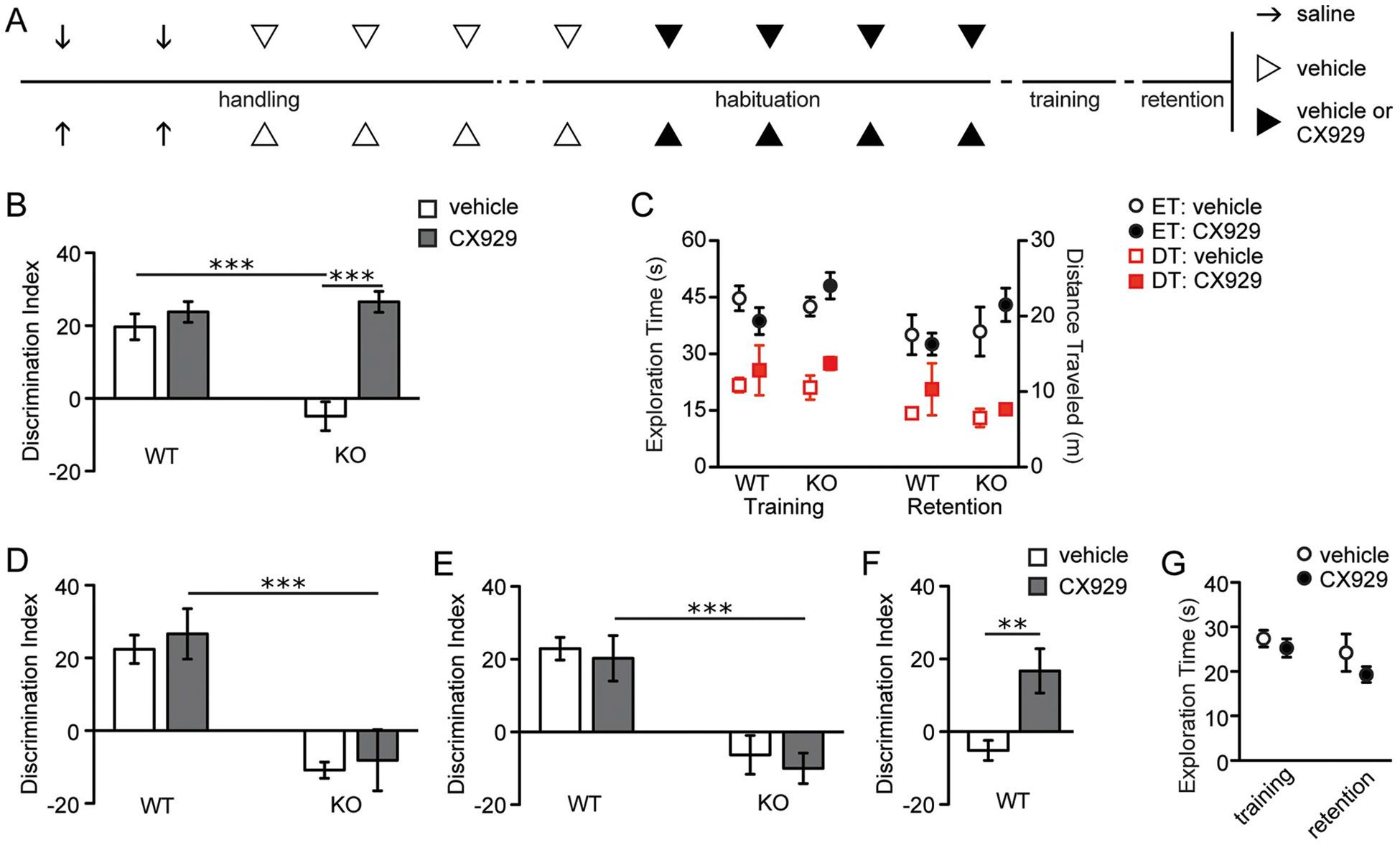Fig. 5.

The ampakine CX929 rescues long-term object location memory in Fmr1 KOs and decreases the learning threshold in WTs.
A, Schematic of experimental paradigm for panels B and C. Throughout handling and habituation, WT and Fmr1 KO animals were injected with saline alone (arrows), vehicle alone (open arrowheads), or either vehicle or CX929 (closed arrowheads) twice daily. Animals were then subjected to a 5-min training trial for OLM and retention was tested 24 h later. B, Vehicle-treated mutants performed significantly worse than vehicle-treated WTs (F1,19 = 16.22; Bonferroni post-test, ***P < .001), but CX929 completely restored long-term memory in the mutants (n ≥ 5/group). C, Exploration time (ET; black circles) and distance traveled (DT; red squares) for both genotypes that received vehicle (open shapes) and CX929 (closed shapes) during training and retention trials are shown (n ≥ 5/group). D, When vehicle or CX929 was given just once 15 min prior to training in experimentally-naïve, sham-injected animals and retention was tested 1 day later, no effect of treatment on discrimination indices was appreciated in either genotype (F1,27 = 0.02; Bonferroni post-test, ***P < .001; n ≥ 7/group). E, Animals described in panel B were tested 2 weeks after completion of their first OLM testing using a new context and a new set of objects. Long-term OLM discrimination indices showed that mutants previously treated with CX929 no longer performed at levels of CX929-treated WTs two weeks after the completion of treatment (F1,18 = 0.01; Bonferroni post-test, ***P < .001; n ≥ 5/group). F, Experimentally naïve WT mice were subjected to the same paradigm as depicted in A but with a training trial lasting 3 min. When tested one day later, discrimination indices were significantly higher in CX929-treated WTs as compared to vehicle-treated WTs (Student’s t-test, **P < .01; n = 9/group). G, Exploration times for the WT mice described in F were similar in training and retention trials (n = 9/group).
